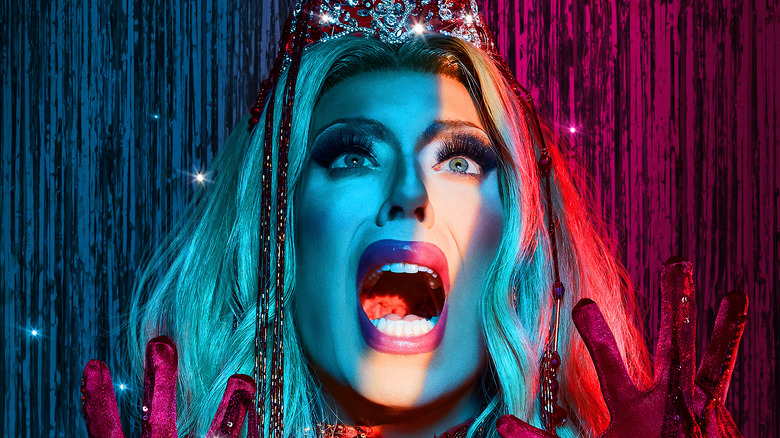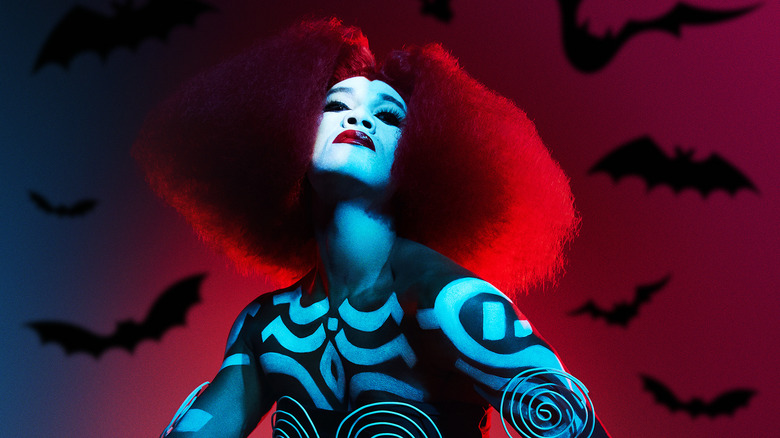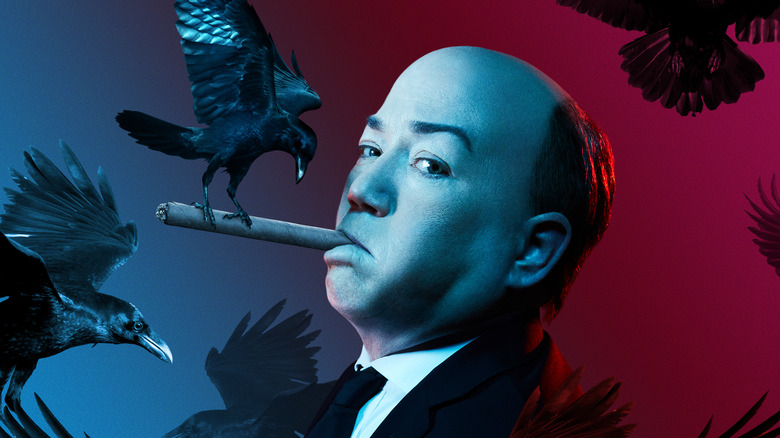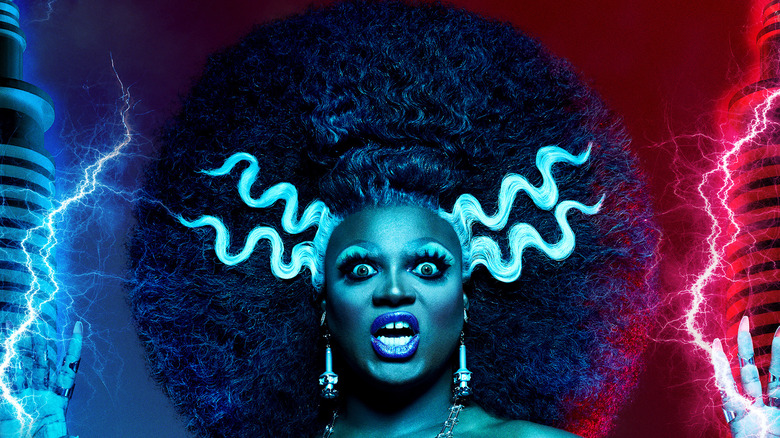Queer For Fear: The History Of Queer Horror Review: The Gayest Genre Gains A Vital Docuseries
Executive produced by Bryan Fuller ("Hannibal"), Fangoria's Phil Noble Jr., Kelly Ryan, and Steakhaus Productions, Shudder's "Queer For Fear: The History of Queer Horror" is a formidable four-part docuseries unveiling and gleefully celebrating the genre's queer roots. Asking any docuseries to embody, explain, and dissect the entirety of queer horror cinema is a lot, honey! Frankly, it's equally hard to review this as our community contains multitudes.
What I glean from this as a white, AFAB, non-binary, bisexual will be different from what others will. But that's the central point of this project: Every queer creator has a story to tell, and queer audiences will take different things from those scenes based on their experiences. Refreshingly, the talking heads in this piece don't always agree — even on delightful questions like if Mrs. Danvers (from 1940's "Rebecca") is a top or bottom — giving it a conversational tone that welcomes you into questioning a multitude of viewpoints.
Based on its first two episodes, "Queer For Fear" does an admirable job balancing film history with modern cultural analysis. It thoughtfully discusses as many aspects of the queer community as it can. That alone is worth noting before we dig into where the docuseries excelled and its blind spots. An all-encompassing queer horror film history documentary like this hasn't existed before, so it's important to note that any pitfall mentioned here is an invitation for another project (or season) to explore the depths we don't see in this one.
The devil is in the details
The first episode of "Queer For Fear" revolves around Mary Shelley's "Frankenstein," Oscar Wilde's "The Picture of Dorian Gray," Bram Stoker's "Dracula," and how these gothic works inspired Hollywood to bring monsters to the big screen. Interviewees like Tawny Cypress, Karyn Kusama, Emily St. James, and Justin Simien take the viewer on a survey-level walkthrough that feels akin to a lively 101 film class, exploring how horror gives a voice to queer viewers who feel othered, silenced, and misunderstood. We love and sympathize with monsters like Frankenstein's creation because we too know what it's like to be hunted with pitchforks or called "abnormal" by government officials. James insightfully relates Shelley's monster to the trans experience, stating that his birth carries the message: "I'm going to reanimate the parts of myself that everyone has told me should be dead."
Devout queer horror fans won't be surprised by the facts mentioned here — like how Shelley's "Frankenstein" came to be thanks to Lord Byron's party-lake house. However, it does artfully weave in lesser discussed tie-ins to queer cinema — like how the '20s pansy craze influenced Universal Monsters. Due to its casual approach, the docuseries brings more of a general overview than discussing sources or scholarly debates. At times, this move doesn't pay off, as it puts the interviewee in the unenviable role of speaking for the subject and their sexuality. (Though most speakers are careful to note the open-endedness of a lot of these claims.) Strangely, it omits the fact that Shelley, the mother of horror, also had several miscarriages — a fact that influenced how she saw motherhood, children, Frankenstein, and her sexuality. But it excels in how it creatively resurrects Shelley's voice.
Love letters as primary sources are hot
Discussing a deceased queer creator and their work is complicated. There's only so much we will know about their lives, as it hinges on what (if any) truth they felt safe to share and if history doesn't erase those documents. In America, it's never been safe to be out, and we're still fighting to keep queer history alive in the public school system. So when Alaska Thunderf*** read Mary Shelley's writing about wanting to get "tousy, mousy" (read: steamy Victorian slang for sex) with her woman "friend," I cheered. Now more than ever, there's magic to keeping her queer identity alive. That inclusion made me hungry for more beats when we hear directly from past queer filmmakers, actors, and writers. Thankfully, we do!
Episode two primarily focuses on legendary director James Whale ("The Old Dark House," "The Invisible Man," "Frankenstein") and the Anthony Perkins ("Psycho"). While it's clear that those being interviewed have done their homework, the layering of archival film footage, photographs, and direct quotes from these men and their families are what elevates the docuseries. Hearing Whale's suicide note verbatim moments after we see flashes of some of Universal Horror's most iconic films is haunting. After Don Mancini discusses how Hitchcock had a nasty habit of casting not-out actors into queer roles, Oz Perkins (Anthony Perkins' son) says: "You ate up Perkins' truth." The juxtaposition between Whale and Perkins is painfully clear. Hollywood bled these queer icons dry, but here, we have a space to memorialize them.
If you or anyone you know is having suicidal thoughts, please call the National Suicide Prevention Lifeline by dialing 988 or by calling 1-800-273-TALK (8255).
Who is seen & who we leave behind
When I heard about the "Queer For Fear" docuseries project, my first question was: "How is this going to be structured?" Beginning in the era of Victorian gothic literature felt like an easy and understandable choice, as it'll likely have a bankable appeal for classic horror nerds. Of course, some limitations come with this structural decision. Focusing (mostly) on American films means there's a Western lens applied to this docuseries. While the Shudder series discusses Bela Lugosi's Dracula, we don't hear about the 1957 Mexican film "El Vampiro" or 1953's "Dracula Istanbul'da." Sadly, that means we miss hearing a rich discussion about how other cultures have taken queer horror monsters like Dracula and their stories about sexual repression, projection, denial, and gender expression.
A global perspective is not the goal of this series. After watching "Queer For Fear," it's hard to not wonder and ache for subsequent queer horror seasons covering differing cultural viewpoints. What other monsters are hidden? And what are they hiding from?
However, as an Americanized take on the history of queer horror, "Queer For Fear" aptly handles its material. Tracing how the general public's fear of queer people and pre and post-Hays code policies influenced cinema's journey from explicit queerness to implicit queerness on-screen during the '30s through the '60s, the series honors its queer predecessors with a joyful undertone about survival and collective strength. Each interviewee's documented personal queer connection to the material is history-making in and of itself, and I want more of it.
"Queer for Fear" premieres Friday, September 30 on Shudder and via the Shudder offering within the AMC+ bundle, followed by a new episode streaming every week.



